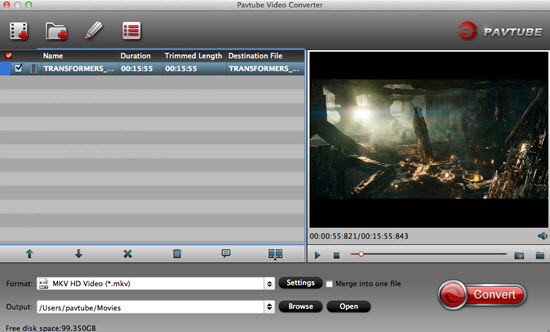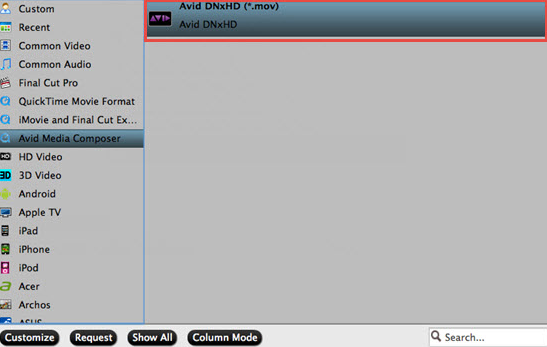What is XAVC S?
XAVC S has been designed as a partner compression codec to XAVC with a more tightly compressed video signal. It is designed to support 4K video signals with a resolution of 3840x2160 pixels and an aspect ratio of 16:9 only. XAVC S uses the MP4 file wrapper defined by MPEG-4 Part 14 for its 4K, HD and proxy files. The recording device can be connected directly to the computer where it appears as an external drive, or the media can be removed and either inserted into the computer directly or connected via a media reader or media adaptor where is also appears as an external drive.

Sony XAVC S camera/camcorder lists
RX10, RX 10 II, RX10 III, RX100 IV, A6000, A6300 , A68, RX1R II, HDR-AZ1, A7S, A7S II, A33, A7R II, FDR-AX1000, HDR-AS100V, HDR-AS200V
Workflow of XAVC S with Avid Media Composer
For faster and fluid workflow, Sony has created a special free of charge AMA plug-in for AVID (PDZK-MA2 V.3.4). This software for Microsoft Windows and MAC OS X operating systems provides support for XAVC and XDCAM / XDCAM HD files in Avid Media Composer, Symphony and NewsCutter products, allowing viewing and editing capability. As for the XAVC S, it is not currently supported by Avid Media Composer. To import XAVC S flies into Avid for smooth editing, thirdparty software is required to convert XAVC S to DNxHD, a codec technology engineered to create mastering-quality media at reduced file sizes, shattering the barriers to real-time productivity, whether using local storage or in real-time collaborative workflows.
Transcode XAVC S to Avid DNxHD
To generate DNxHD codec from XAVC S, here is a professional solution in hand called Pavtube Video Converter for Mac (best Mac Video Converter Review)/Windows, with the program, you can easily transcode Sony XAVC/XAVC S and also other professional video recording format such as MXF, AVCHD, H.265/HEVC, etc to DNxHD codec for Avid Media Composer.
Trim/Merge/Crop/Split/Watermark XAVC S
Want to do some basic video editing work before proceeding to the professional post-production workflow with Avid? You can done that job with our program with ease. With the "Trim" function you can easily cut off unwanted parts or segments form your video, the "Merge" tool helps to combine all the separate video clips into single one file, the "Split" option facilitates you to split large files into small parts by file size, length or count and the "Crop" tool enables you to cut off unwanted edges around the video.
Besides generating DNxHD codec for Avid Media Composer, the program also facilitate to convert XAVC/XAVC S to Prores for FCP 7 or AIC for iMovie or Premiere Pro CC specially optimized file formats.
How to Transcode Sony XAVC S to DNxHD for Avid Media Composer?
Step 1: Transfer XAVC S footage from camera to computer.
The XAVC S format products are recorded on the fastest SD cards(SDXC), the recorded footage can be transferred to you computer in the following 3 ways:
1. Directly connect the camera/camcorder to the computer via a USB cable.
2.Remove the SDXC card from the camera/camcorder and then plug it into the computer.
3.Fit the computer via the SDXC media adaptor.
Step 2: Load Sony XAVC S files.
Click "File" drop-down "Add Video/Audio" or "Add from folder" option to add the Sony XAVC S files that have been transferred from your camera/camcorder to your Mac hard drive.

Step 2: Specify output file format.
From "Format" drop-down lists, you can select Avid Media Composer preferable editing codec from "Avid Media Composer" > "Avid DNxHD(*.mov)" as the output format.

Step 3: Merge into one file.
Check the ![]() icon on the main interface to join your captured separate footage together into one single video.
icon on the main interface to join your captured separate footage together into one single video.
Step 4:Convert Sony XVAC S to Avid Media Composer.
After all the parameter setting is completed, you can start the conversion process by hitting the right-bottom convert button.
When the conversion is done, hit the "Open" button on the main interface to locate and locate and find the converted files. Then continue with your fast and fluid post workflow of Sony XVAC S footage with Avid Media Composer on Mac OS X.


 Home
Home Free Trial Video Converter for Mac
Free Trial Video Converter for Mac





